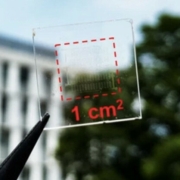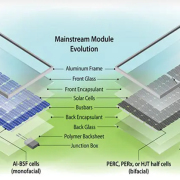Transparent solar cells, which have the potential to convert windows, greenhouses, glass panels of smart devices, and more into energy harvesting devices, have taken another step toward becoming a reality.
A team of scientists from the Tohoku University in Japan has created a near-invisible solar cell using indium tin oxide (ITO) as a transparent electrode and tungsten disulfide (WS2) as a photoactive layer.
Remarkably, the cell has the potential to achieve a transparency of 79 percent and can help take the TMD-based near-invisible solar cells from the basics to truly industrialized stages, according to the study published in the journal Scientific Reports.
Click here to read the full article
Source: Interesting Engineering
—
If you have any questions or thoughts about the topic, feel free to contact us here or leave a comment below.



